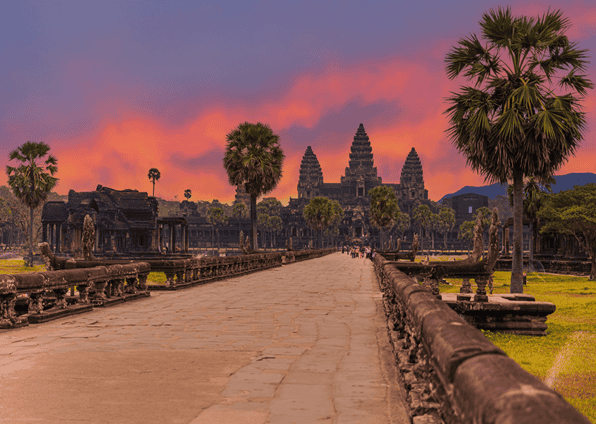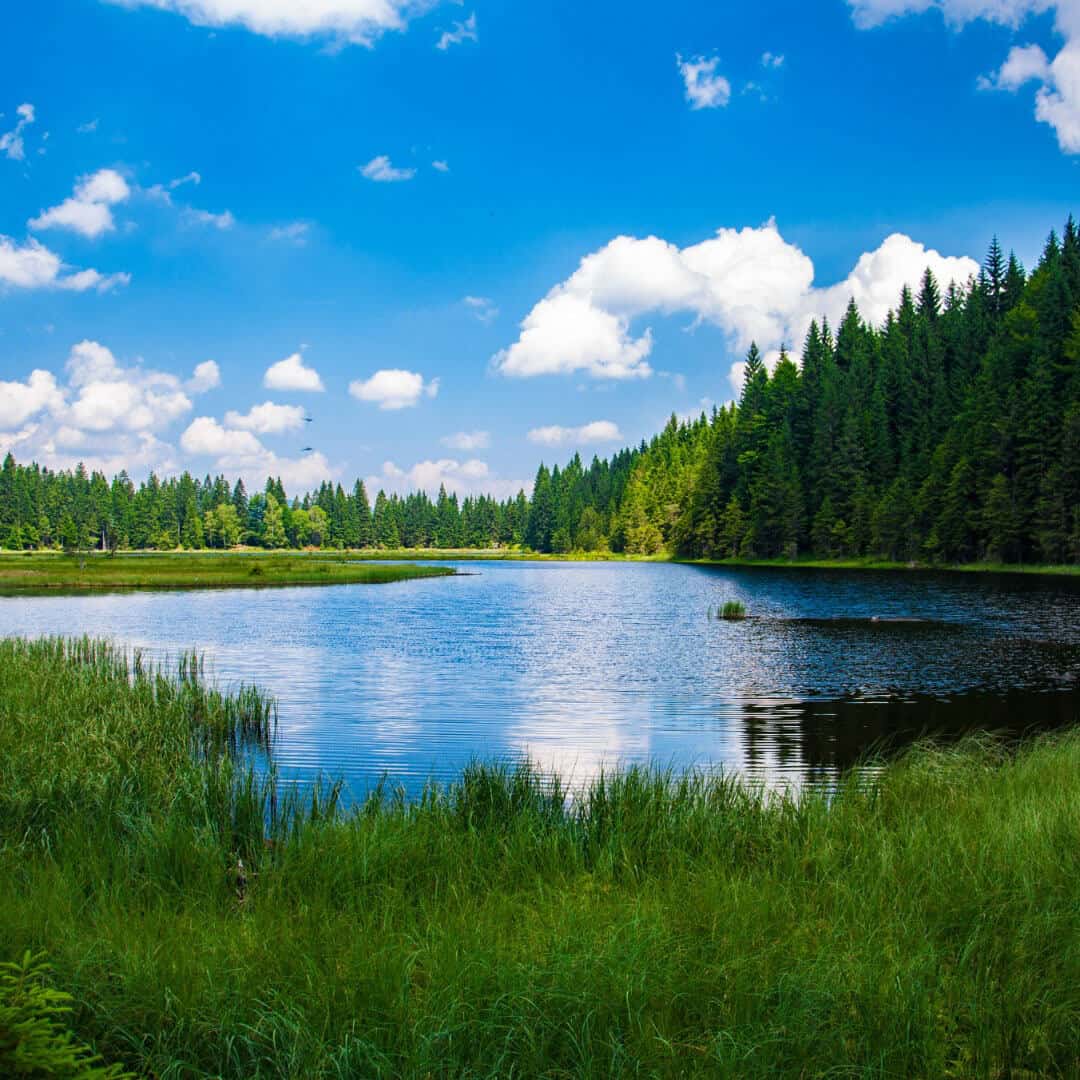

Cambodia Travel Guide
Best ways to experience Cambodia
Planning your trip to Cambodia can be a challenge. From the awe-inspiring temples of Angkor Wat and the bustling streets of Phnom Penh to the serene beaches of Sihanoukville, the lush jungles of the Cardamom Mountains and unique cultural encounters in traditional villages, there is so much to experience in Cambodia.
It’s only natural to want to sample a bit of everything, but if you’re constrained by time, here are a few favourite experiences that are well worth including on your Cambodia itinerary.
● Take in the sights and sounds of Phnom Penh – As the nation’s capital, Phnom Penh boasts a rich history, vibrant culture and bustling urban lifestyle with plenty to see and do. From the majestic Royal Palace and poignant memorials of the Tuol Sleng Genocide Museum and Killing Fields to the Cambodian National Museum, bustling Central and Russian markets and lively Sisowath Quay riverfront, Phnom Penh is the perfect place to kick-start your Cambodian adventure.
● Explore Angkor Wat – Witnessing the breath-taking beauty and historical grandeur of Angkor Wat, one of the world’s most significant archaeological sites, is a must for every visitor to Cambodia. Arrive early to catch the sunrise over the impressive temples, then spend the day exploring the vast complex including the enigmatic faces of Bayon Temple and the jungle-clad Ta Prohm.
● Experience Battambang – A charming provincial town known for its preserved colonial architecture, vibrant arts scene and authentic local culture, take a leisurely bike ride or tuk-tuk tour through the town’s picturesque streets and visit historical sites such as the old French Governor’s Residence and Wat Ek Phnom temple. Make sure you also take in the unique Bamboo Train experience where you can ride a makeshift bamboo platform through the countryside!
● Spend time beach-side in Sihanoukville – Sihanoukville is best known for its stunning beaches, crystal-clear waters and relaxed tropical vibe. Whether you fancy some snorkelling or diving, lounging on beautiful beaches like Serendipity Beach and Otres Beach, joining an island-hopping excursion to nearby islands such as Koh Rong and Koh Rong Samloem, or living it up at its lively beach bars, you can do it all in Sihanoukville
Visiting Cambodia
Climate
Cambodia has a tropical monsoon climate characterised by distinct wet and dry seasons. The country experiences a hot and humid climate year-round, with temperatures generally ranging from 25°C to 35°C.
The dry season typically runs from November to April, offering pleasant weather with clear skies and lower humidity. This period is considered the best time to visit Cambodia, particularly for exploring ancient temples and enjoying outdoor activities.
The wet season spans from May to October, marked by heavy rainfall, particularly from June to September. Despite the rain, the landscape turns lush and green during this time, making it a unique and beautiful time to visit if you don’t mind braving a few showers.
Culture and language
The primary language spoken is Khmer (Cambodian). As an English-speaking tourist, you can generally get by quite well, as many locals speak basic to moderate English. Learning a few Khmer phrases can be helpful, but language barriers are usually minimal in popular tourist spots.
Cambodia’s culture is a rich tapestry influenced by its ancient history, religious traditions and diverse ethnic groups. The predominant culture is shaped by Theravada Buddhism, which plays a central role in daily life and customs. Cambodians are known for their resilience, warmth and hospitality, and their culture is largely characterised by respect for elders, strong family ties and communal values.
Traditional Khmer arts, such as classical dance, music and handicrafts, are celebrated and preserved. The cuisine reflects a blend of Southeast Asian flavours, with popular dishes like amok (fish curry) and num banh chok (noodle soup). Festivals like Khmer New Year (Chaul Chnam Thmey) and the Water Festival (Bon Om Touk) are vibrant occasions that showcase traditional dance, music and boat races.
When visiting temples or religious sites, it’s best to wear modest clothing that covers the shoulders and knees. You may also be asked to remove your shoes. Cambodia also upholds strict laws relating to some offences. It’s important to research and respect the local laws when visiting Cambodia.
Getting around
Getting around Cambodia isn’t too difficult with a variety of transportation options available including tuk-tuks, taxis and buses, although road conditions and distances between destinations can sometimes pose challenges.
In cities like Phnom Penh and Siem Reap, tuk-tuks and motorbike taxis (known as motodops) are popular and convenient for short distances. For longer journeys, private taxis or shared minivans can be a good option. Buses and coaches also connect major cities and tourist areas, offering affordable options for budget-conscious travellers.
In more rural areas, renting a motorbike or scooter can provide flexibility and access to remote sites. If you choose to hire a motorbike while in Cambodia, just make sure it comes with adequate vehicle insurance in case you have an accident. You’ll be pleased to know our travel insurance provides cover for claims that arise from the use of a motorbike, provided you wear a helmet and meet the local license requirements for the motorbike you are riding. If the motorbike is more than 125cc, you’ll also need to have a current and valid licence required for driving an equivalent-rated Motorcycle in Australia.
Accommodation
Cambodia offers a variety of accommodation options including everything from hotels and guesthouses to resorts, private villas, serviced apartments and budget backpacker hostels.
You’ll generally find that most of the accommodation in Cambodia is relatively affordable compared to what you might expect to pay in Australia when you consider the quality of the rooms and facilities and the level of service provided.
Entry requirements
Australians need a visa to visit Cambodia. You can apply for a 30-day e-visa before you travel or purchase a tourist visa on arrival.
It’s always a good idea to visit the Australian government’s Smartraveller website before your trip for the latest information and updates about travelling to Cambodia.
All benefits and covers are subject to the terms, conditions, limitations and exclusions listed in the Combined Financial Services Guide and Product Disclosure Statement (PDS) and on other policy documentation, including the schedule.
Cambodia travel insurance FAQs
It’s always a good idea to get travel insurance when travelling to Cambodia, so you know you’re prepared if something doesn’t go to plan. From medical emergencies to lost luggage, travel insurance can come in handy in a variety of situations. Choosing cover that also offers instant claims can also be invaluable while travelling abroad.
The best way to find out how much it will cost to get cover to travel to Cambodia is to get an instant quote with PassportCard. It only takes a couple of minutes to get a personalised quote by providing some basic details such as your age, destination/s, travel dates and the level of cover you would like.
Not automatically. If you’re planning on doing any activities like cascading, deep sea fishing, mountain biking, mud buggying, paragliding, quad bike riding, outdoor rock climbing, segway tours or sky diving, you’ll need to add Optional & Adventure cover for these activities when you purchase your travel insurance to make sure you’ll be covered.
Simply call our Global Assistance team on +61 1800 490 478 or contact us on WhatsApp. Our Australian-based Global Assistance team is available 24/7 and can quickly handle most common claims on-the-spot over the phone.
No. Many Australians don’t realise that they won’t be covered by Medicare when overseas. Purchasing travel insurance with cover for medical emergencies and evacuation is essential to ensure you won’t be left to foot the bill if you become seriously sick or injured while travelling.
Preparing for your trip to Cambodia
All set for your Cambodia escape?
Make sure you’ve ticked these items off your checklist before you head off:
● Check your passport is valid with at least 6 months of validity left from the date you plan to leave the country
● Ensure you meet the visitor entry requirements for Cambodia and have obtained a visa prior to your trip
● Speak to your doctor to check if you’ll need any vaccinations. Your doctor may recommend you be vaccinated for hepatitis A, hepatitis B, typhoid, Japanese encephalitis and rabies
● Notify your financial institution of your plans to travel
● Arrange a travel currency card or another method of payment to cover expenses while you’re away. It’s also a good idea to take some Cambodian Riel (KHR) or US Dollars (USD) with you as some places may only accept cash
● Contact your phone provider to ensure your phone plan will cover you while you’re away or purchase a pre-paid international sim card
● Arrange accommodation for each location you plan to stay in
● Consider booking any tours or activities you want to do in advance, particularly if you will be visiting during peak season
● Remember to pack your mosquito repellent and use mosquito nets when available in your accommodation, as Cambodia is home to numerous mosquito or insect-borne diseases
● Provide details of your travel plans to a family member or close friend not travelling with you so you can be contacted in case of an emergency












